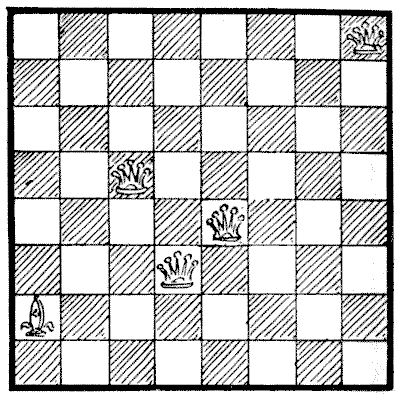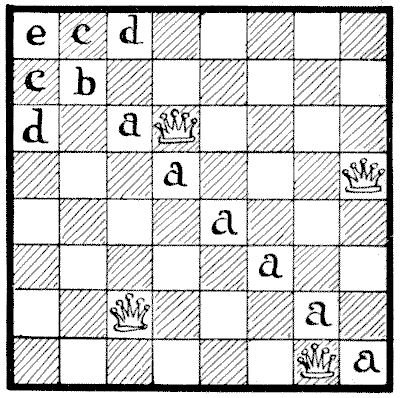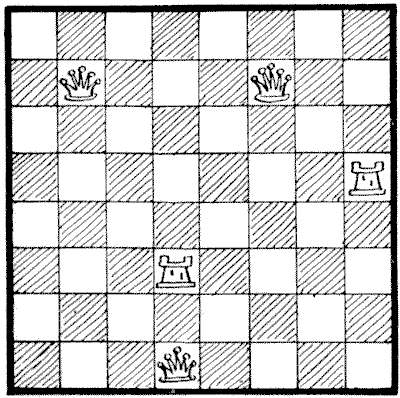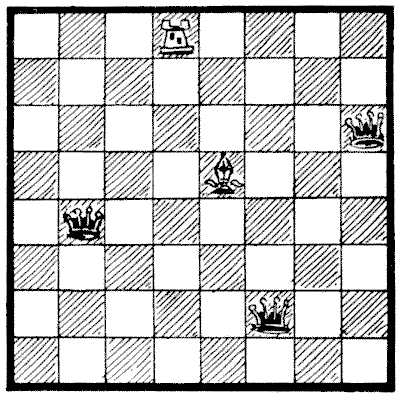(related to Problem: Queens And Bishop Puzzle)
The bishop is on the square originally occupied by the rook, and the four queens are so placed that every square is either occupied or attacked by a piece. (Fig. $1.$)

I pointed out in 1899 that if four queens are placed as shown in the diagram (Fig. $2$), then the fifth queen may be placed on any one of the twelve squares marked $a, b, c, d,$ and $e;$ or a rook on the two squares, $c;$ or a bishop on the eight squares, $a, b,$ and $e;$ or a pawn on the square $b;$ or a king on the four squares, $b, c,$ and $e.$

The only known arrangement for four queens and a knight is that given by Mr. J. Wallis in The Strand Magazine for August 1908, here reproduced. (Fig. $3.$)

I have recorded a large number of solutions with four queens and a rook, or bishop, but the only arrangement, I believe, with three queens and two rooks in which all the pieces are guarded is that of which I give an illustration (Fig. $4$), first published by Dr. C. Planck.

But I have since found the accompanying solution with three queens, a rook, and a bishop, though the pieces do not protect one another. (Fig. $5.$)

This eBook is for the use of anyone anywhere in the United States and most other parts of the world at no cost and with almost no restrictions whatsoever. You may copy it, give it away or re-use it under the terms of the Project Gutenberg License included with this edition or online at http://www.gutenberg.org. If you are not located in the United States, you'll have to check the laws of the country where you are located before using this ebook.